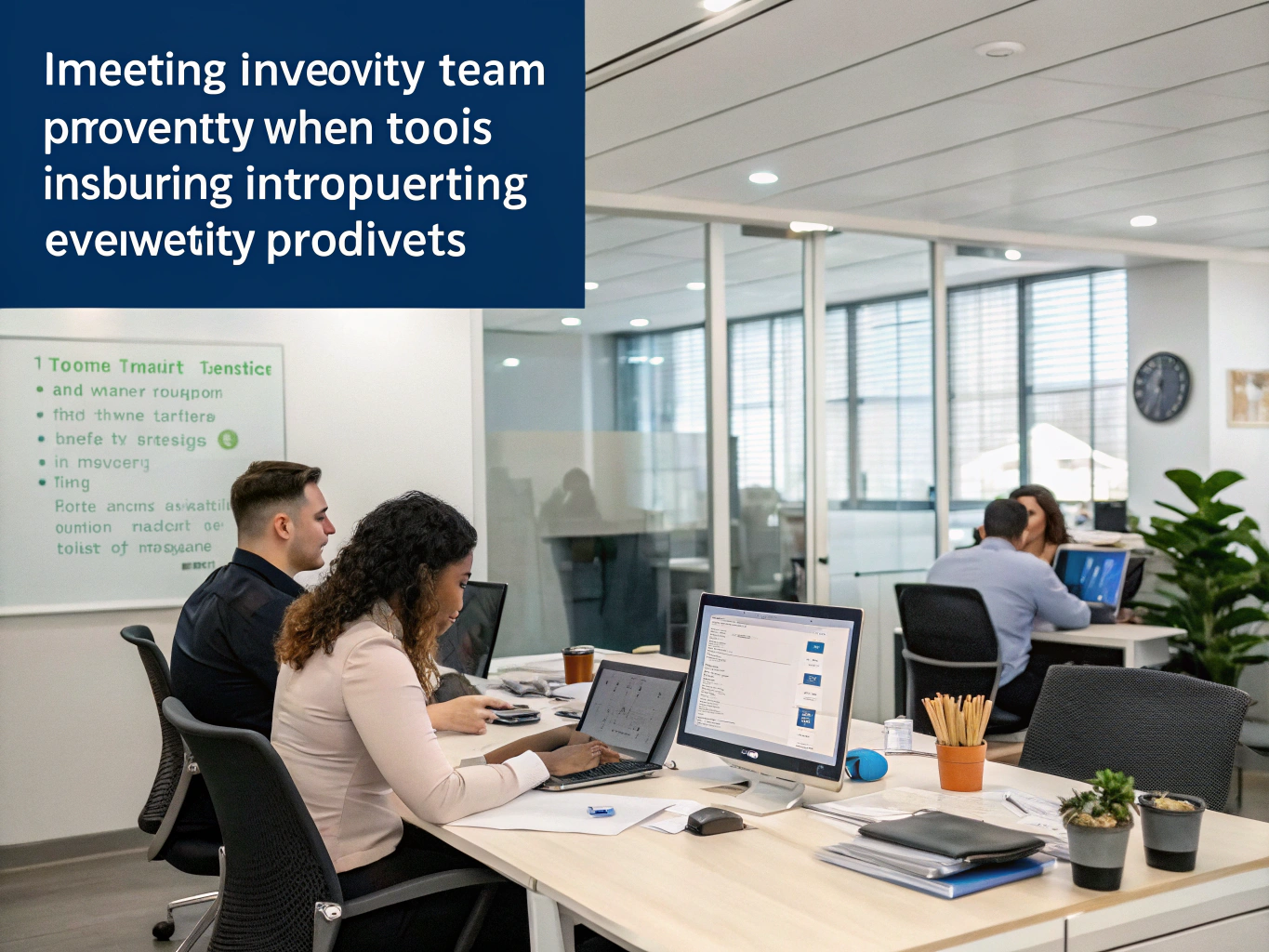How Businesses Can Increase Productivity by Investing in 2025 Tools
In today's fast-paced business environment, businesses can increase productivity by investing in the right technology and tools. As we move deeper into 2025, companies that strategically allocate resources to cutting-edge productivity tools 2025 are seeing remarkable returns on their investments.
Table of Contents
- The Productivity Crisis Facing Today's Businesses
- Why Investing in Productivity Tools Matters in 2025
- Top Productivity Tools Worth Your Investment
- Implementation Strategies for Maximum ROI
- Measuring the Impact of Your Productivity Investments
- Future-Proofing Your Productivity Strategy
- FAQs
The Productivity Crisis Facing Today's Businesses
The business landscape in 2025 presents unique challenges. Remote and hybrid work environments have become standard, team collaboration happens across time zones, and the sheer volume of digital information continues to grow exponentially. Without the right systems in place, these factors can lead to significant productivity drains.
According to recent studies, the average employee spends nearly 2.5 hours daily searching for information, switching between applications, and managing their workflow inefficiently. That's approximately 25% of the workday lost to poor productivity infrastructure!
Why Investing in Productivity Tools Matters in 2025
Smart businesses understand that to increase business productivity, they must be willing to invest in productivity software that addresses their specific challenges. The right investments can:
- Reduce time wasted on repetitive tasks
- Improve collaboration and communication
- Streamline workflows and approval processes
- Enhance focus and reduce digital distractions
- Provide valuable analytics on team performance
Many companies hesitate to invest in new productivity tools due to budget concerns. However, the math is clear: if your team can reclaim even 10% of previously wasted time, the ROI becomes substantial within months, not years.
Top Productivity Tools Worth Your Investment
As we navigate 2025, several categories of tools to boost efficiency stand out as particularly valuable investments:
AI-Powered Workflow Automation
Artificial intelligence has matured significantly, making it a cornerstone of business growth strategies 2025. Today's AI tools can:
- Automatically prioritize emails and notifications
- Draft responses to routine inquiries
- Schedule meetings based on participants' availability patterns
- Transcribe and summarize meetings with action items
- Generate reports from raw data
For businesses looking to harness AI for productivity, the >AI for Productivity eBook + Checklist: Supercharge Your Efficiency in 2215 offers comprehensive guidance on implementation strategies.
Integrated Collaboration Platforms
The days of siloed communication tools are over. The most effective modern workplace technology platforms now offer:
- Document collaboration with version control
- Project management with task assignments and deadlines
- Chat, video, and file sharing in one interface
- Customer relationship management integration
- Time tracking and productivity analytics
Check out our guide on productivity suite options for teams and creators to find the right platform for your business needs.
Focus and Time Management Solutions
Distractions cost businesses billions annually. Smart investments in focus tools help teams:
- Block distracting websites during deep work periods
- Structure workdays around energy levels, not just time
- Track time spent on different projects and clients
- Create accountability systems for important deadlines
- Manage notifications to reduce constant interruptions

Particularly for team members with attention challenges, the >ADHD Productivity Power Pack: Ebooks, Guides, Checklists, Workbook & Tools to Master Focus, Time Management & Organization provides specialized strategies that can transform productivity.
Data Analytics and Performance Dashboards
You can't improve what you don't measure. Modern productivity analytics help businesses:
- Identify productivity bottlenecks in real-time
- Track key performance metrics across teams
- Visualize project progress and resource allocation
- Compare productivity patterns before and after tool implementations
- Forecast resource needs based on historical productivity data
Our productivity tracker excel template guide shows how even simple tools can provide powerful insights when properly configured.
Implementation Strategies for Maximum ROI
Investing in tools is only the first step. To truly improve team performance, businesses need thoughtful implementation strategies:
Phase Your Rollout
Don't overwhelm your team with multiple new tools simultaneously. Instead:
- Start with tools that address your most significant pain points
- Begin with a small pilot group to work out integration issues
- Create clear documentation and training resources
- Establish champions within each department
- Gather feedback and adjust before company-wide implementation
Focus on Integration
The productivity paradox occurs when tools meant to save time actually create more work. Avoid this by ensuring:
- New tools integrate with your existing tech stack
- Single sign-on is implemented where possible
- Data flows automatically between systems
- Employees don't need to duplicate efforts across platforms
- Mobile access is available for on-the-go team members
Create Clear Policies
Technology alone doesn't solve productivity issues. Pair your tools with clear policies:
- Define communication channels for different types of information
- Establish response-time expectations for various platforms
- Create guidelines for meeting scheduling and attendance
- Document file naming and organization conventions
- Set boundaries around after-hours communications
Our article on energy management for productivity provides additional insights on building sustainable productivity systems.
Measuring the Impact of Your Productivity Investments
Smart businesses track specific metrics to validate their productivity investments:
- Time savings: Measure hours saved on routine tasks
- Output quality: Track error rates and quality metrics
- Completion rates: Monitor project completion timelines
- Collaboration metrics: Measure cross-functional collaboration frequency
- Employee satisfaction: Survey team members about tool effectiveness
- Client satisfaction: Monitor impacts on client deliverables and feedback
- ROI calculation: Compare investment costs against productivity gains
Future-Proofing Your Productivity Strategy
The productivity tools landscape continues to evolve rapidly. To stay ahead:
- Reserve a portion of your productivity budget for experimentation
- Create a formal review process to evaluate tool performance quarterly
- Subscribe to industry publications focused on workplace technology
- Establish a feedback mechanism for employees to suggest new tools
- Build flexibility into your tech stack to allow for easy transitions
For companies looking to stay on the cutting edge, our article on cutting-edge productivity methods toolkit provides a roadmap for continuous improvement.
FAQs
How much should we budget for productivity tools in 2025?
Most successful businesses allocate 3-5% of their operational budget to productivity and efficiency tools. However, the exact amount varies based on your industry, team size, and specific challenges. Start with tools that address your biggest productivity drains for maximum initial ROI.
How can we measure the ROI of our productivity investments?
Track both quantitative metrics (time saved, increased output) and qualitative feedback (employee satisfaction, reduced stress). Compare productivity levels before and after implementation, and calculate the financial value of time saved against your investment costs.
Should we invest in specialized tools or all-in-one platforms?
This depends on your specific needs. All-in-one platforms reduce the friction of switching between tools and typically offer better integration. However, specialized tools often provide deeper functionality for specific needs. Many businesses use a core platform supplemented by specialized tools for particular departments or functions.
How do we ensure employee adoption of new productivity tools?
Involve employees in the selection process, provide comprehensive training, showcase real benefits to their daily work, and recognize early adopters. Remember that adoption happens gradually – plan for a 3-6 month transition period for any significant new tool.
What productivity investments deliver the fastest returns?
Automation tools that eliminate repetitive tasks typically show the fastest ROI, often within weeks. Project management and collaboration platforms usually show significant returns within 2-3 months as team coordination improves. Focus and time management tools may take 3-6 months to fully demonstrate their value as habits change.
When it comes to increasing productivity, smart businesses can increase productivity by investing in tools that address their specific challenges while aligning with their work culture. The key is selecting solutions that genuinely solve problems rather than creating new ones – and implementing them with intention and proper training.

